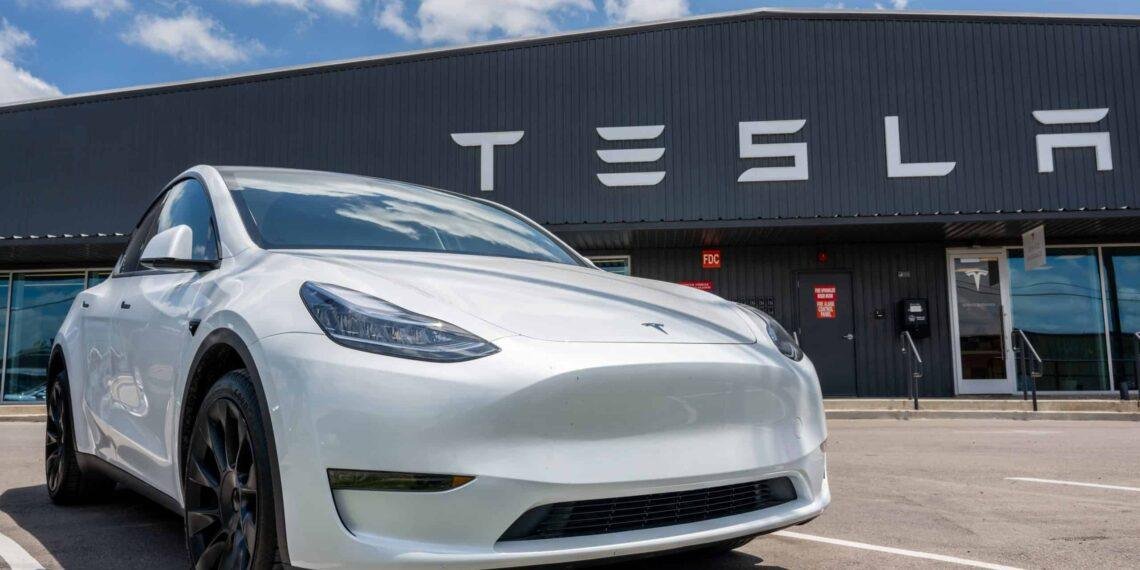Tesla, the electric vehicle (EV) giant that has long been a darling of Wall Street, is facing a bumpy ride. As of February 26, 2025, the company’s stock has been on a downward trajectory, sparking heated debates among investors, analysts, and enthusiasts alike. After years of meteoric rises and a market valuation that at times seemed to defy gravity, Tesla’s recent slide has some asking: Is this a temporary dip, or the beginning of the end for the EV titan’s dominance?
Tesla’s stock has experienced significant volatility over the past year, but the latest decline has been particularly sharp. Dropping from its all-time highs, the stock has shed a notable percentage of its value in recent months, driven by a mix of macroeconomic headwinds, company-specific challenges, and shifting investor sentiment. While exact figures fluctuate daily, the trend is unmistakable: the once-unstoppable momentum has stalled.
This isn’t the first time Tesla has faced a downturn. The company has weathered storms before—supply chain disruptions, production delays, and even skepticism about its ambitious promises. Yet, each time, Tesla has bounced back, buoyed by innovation, Elon Musk’s vision, and a loyal fanbase. So what’s different now?
The broader economic environment isn’t doing Tesla any favors. Rising interest rates, persistent inflation, and fears of a global recession have put pressure on growth stocks, particularly those with lofty valuations like Tesla’s. Higher borrowing costs make it tougher for consumers to finance big-ticket purchases like electric vehicles, which, despite Tesla’s efforts to cut prices, remain a premium product for many.
Competition is heating up too. Legacy automakers like Ford and General Motors are ramping up their EV offerings, while Chinese manufacturers like BYD are gaining ground with cheaper alternatives. Tesla once had the first-mover advantage, but the field is getting crowded, and its market share is no longer guaranteed.
On the operational front, Tesla has hit some roadblocks. Supply chain bottlenecks, though improving, still linger from the pandemic era, and the company’s aggressive expansion—think new factories in Shanghai and Berlin—hasn’t delivered the seamless scaling investors hoped for. The much-hyped Cybertruck, after years of delays, is finally rolling out, but its reception has been mixed, with some questioning whether it can live up to the hype.
Then there’s the Elon Musk factor. The CEO’s polarizing persona has always been a double-edged sword for Tesla. His relentless drive and bold predictions have fueled the company’s rise, but his extracurricular activities—running X, pushing SpaceX, and wading into political controversies—have raised concerns about focus. Some investors worry that Musk’s divided attention could be costing Tesla at a critical juncture.
Despite the gloom, Tesla’s bulls remain defiant. They point to the company’s fundamentals: Tesla still leads the EV market in sales and profitability, with margins that outpace competitors. Its energy division, including solar and battery storage, is quietly growing into a powerhouse, potentially diversifying revenue beyond vehicles. And let’s not forget the promise of autonomous driving—Tesla’s Full Self-Driving (FSD) technology, while not yet fully realized, could be a game-changer if it delivers on its potential.
Read Also: 20-yr-old FUPRE student floats social media app Plutoid
Tesla’s global footprint is another ace up its sleeve. With factories spanning continents, the company is better positioned than most to navigate geopolitical tensions and localize production. Plus, Musk’s knack for defying skeptics has a way of turning doubters into believers time and again.
On the flip side, bears argue that Tesla’s best days might be behind it. The stock’s valuation, even after the slide, remains sky-high compared to traditional automakers, leaving little room for error. If EV demand softens—or if competitors catch up faster than expected—Tesla could lose its edge. The reliance on Musk’s star power is also a risk; if his magic touch falters, so might investor confidence.
There’s also the question of innovation saturation. Tesla redefined the auto industry with the Model S and Model 3, but recent offerings like the Model Y and Cybertruck haven’t sparked the same revolutionary fervor. Critics wonder if Tesla’s pipeline can keep delivering the breakthroughs that once set it apart.
So, is this the beginning of the end for Tesla? Not likely—at least not yet. The company’s track record suggests it’s more resilient than its detractors think, and its ability to pivot under pressure is well-documented. But the road ahead is undeniably tougher. Tesla isn’t the scrappy upstart anymore; it’s a mature player in a fiercely competitive arena, and the margin for missteps is shrinking.
For investors, the sliding stock might be a buying opportunity—or a warning sign. For the EV industry, Tesla’s trajectory will shape the narrative, whether it’s a tale of triumph or a cautionary one. One thing’s certain: all eyes will stay on Tesla, waiting to see if it can recharge and accelerate once more—or if this skid marks the start of a longer decline.
As of now, the jury’s out. What do you think—bullish or bearish on Tesla’s future?






